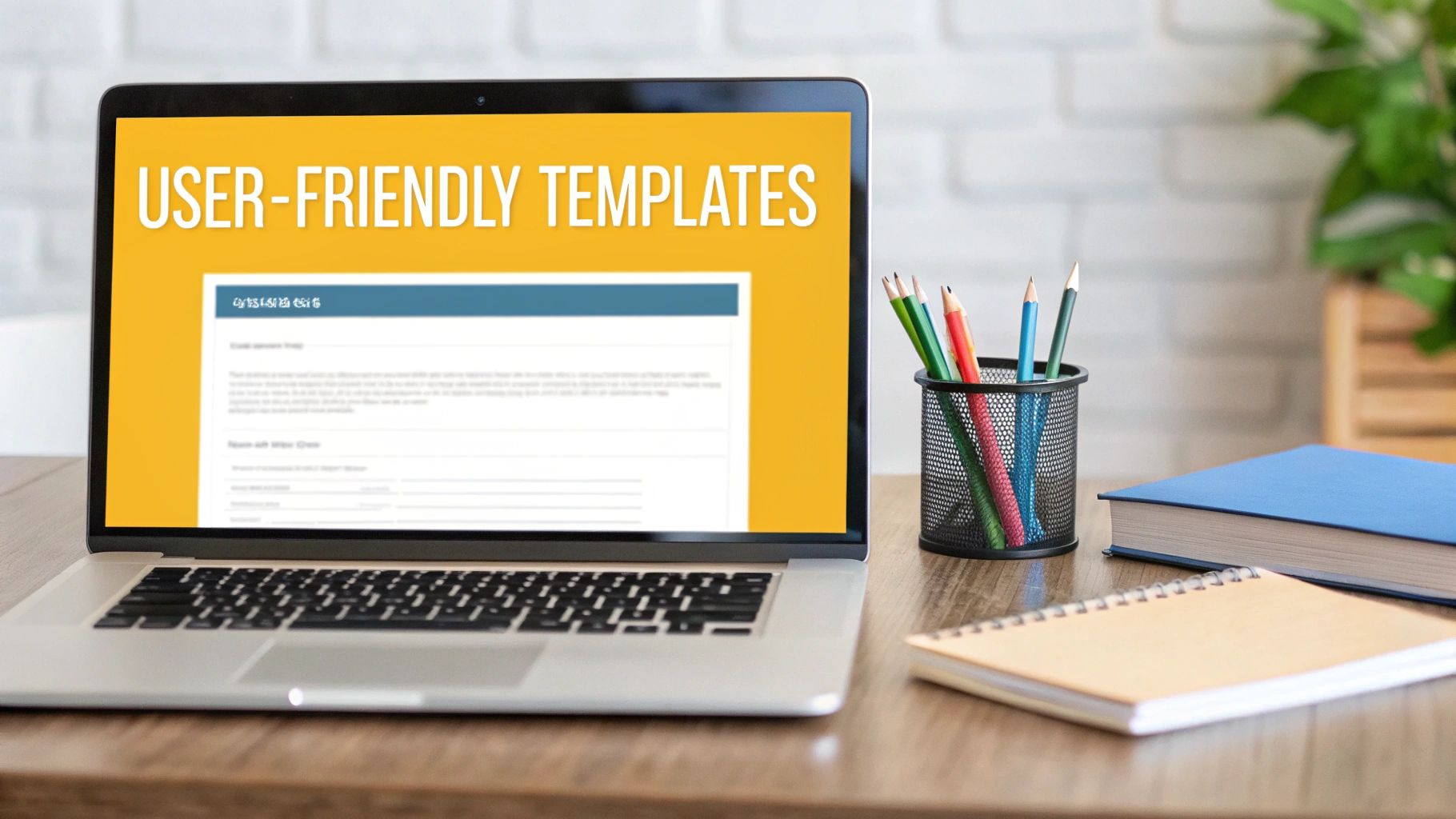The Ultimate Guide to Customer Feedback Survey Templates: Proven Success Strategies
Understanding Response Rates Across Modern Survey Channels

Response rates are key indicators that help measure the effectiveness of customer feedback surveys. The method you choose for collecting feedback directly impacts how many people participate. Knowing the relationship between survey channels and participation rates is essential for creating effective customer feedback surveys.
How Distribution Channels Impact Survey Response
Each survey method produces different participation levels, which affect data quality. Face-to-face surveys achieve the highest engagement at 57% response rate, largely because personal interaction builds trust. In contrast, email surveys typically see 30% response rates due to inbox overload and spam filtering. Understanding these differences helps select the best method for your survey.
Here's how response rates compare across different methods:
| Survey Method | Average Response Rate |
|---|---|
| In-Person | 57% |
| 50% | |
| 30% | |
| Online | 29% |
| Phone | 18% |
| In-App | 13% |
These numbers show why matching your survey method to your goals is crucial. Find more response rate data here.
Matching Channels to Your Audience
Picking the right survey method requires knowing how your audience prefers to communicate. For example, mobile-first users might engage better with in-app surveys, even though response rates are lower. Professional audiences often respond better to scheduled phone calls or in-person meetings that offer direct engagement.
How to Choose the Right Channel
Consider these key factors when selecting your survey method:
- Audience Preferences: Know how your target group likes to communicate
- Survey Goals: Pick a channel that matches the depth of feedback needed
- Available Resources: Consider your budget and team capacity for each method
Making informed choices about survey channels based on these factors helps businesses get better feedback. The right method combined with well-designed survey templates leads to meaningful responses.
Success Stories from the Field
Real companies show how smart channel choices boost engagement. One tech company found post-purchase online surveys gave them actionable insights despite average response rates. A service business increased phone survey participation by offering rewards, getting valuable customer feedback.
Understanding response patterns across different channels helps create more effective surveys that connect with audiences and drive results.
Crafting Brand-Aligned Survey Templates That Convert
Great customer feedback surveys go beyond basic questions. To get meaningful responses, you need to design surveys that resonate with your brand identity. Your survey serves as a key touchpoint where customers directly interact with your business. Every element - from colors to question wording - needs to align with your brand personality to achieve better response rates and higher quality feedback.
Integrating Brand Elements Into Your Surveys
Strong visual branding builds trust and recognition in your surveys. This means using your brand colors, logo, fonts, and imagery consistently. For instance, if your brand has a fun, energetic personality, use bright colors and engaging visuals. For more professional brands, opt for clean, minimal designs. These visual elements create a seamless brand experience that puts respondents at ease.
Structuring Questions for Optimal Flow and Engagement
The way you organize questions is just as crucial as visual design. Begin with simple warm-up questions before moving to more in-depth topics. Think of it like having a natural conversation - you build rapport gradually. When questions flow logically, respondents are more likely to complete the survey and provide thoughtful answers.
Customer satisfaction survey templates offer flexibility for different business needs. The 'Feedback Survey' template uses emojis to make rating scales more engaging and spans eight pages with space for custom questions and branding. Learn more about effective templates here.
Utilizing Multimedia and Interactive Features
Consider adding images, videos, sliders, or drag-and-drop elements to make surveys more engaging. However, use these features sparingly and purposefully. Too many interactive elements can distract from the core purpose and affect data quality. The goal is to enhance the experience while maintaining focus on gathering accurate feedback.
Maintaining Professionalism and Data Integrity
While engagement matters, professionalism is essential. Use clear, straightforward language and avoid biased questions. A professional tone reflects well on your brand and leads to more reliable data. This feedback becomes a valuable tool for improving customer experience and making smart business decisions. Remember - the ultimate aim is collecting actionable insights to help your business grow.
Transforming Survey Data Into Business Growth

Survey data becomes truly valuable when you convert it into concrete actions that improve your business. Moving beyond basic data collection to create meaningful feedback loops helps organizations make smarter decisions. Let's explore practical ways to turn survey responses into growth strategies.
Connecting Feedback to Key Performance Indicators (KPIs)
Make customer feedback meaningful by linking it directly to your business metrics. For instance, if surveys highlight issues with your checkout process, monitor that page's conversion rate closely. By connecting feedback to measurable KPIs like conversion rates and customer lifetime value, you can see exactly how addressing customer pain points impacts your bottom line.
Identifying Emerging Trends
Regular surveys act as an early alert system for changing customer needs and preferences. Look for common themes in open-ended responses to spot new opportunities before your competitors. Keep track of frequently requested features or services - these insights help you stay ahead of market demands.
Your surveys become most impactful when tied to clear business outcomes. Research consistently shows that higher customer satisfaction leads to increased profits and lower churn rates. According to recent studies, 89% of customer experience professionals identify poor experiences as the main reason customers leave. For more insights, check out SurveyMonkey's research on customer satisfaction.
Developing Targeted Improvements
Turn feedback into specific action items. This could mean redesigning key features, updating service policies, or adjusting how you communicate with customers. For example, if surveys show pricing confusion, simplify your pricing structure and create clearer explanations.
Prioritizing Feedback-Driven Initiatives
Not all feedback deserves equal attention. Create a clear system for ranking improvement projects based on:
- How often an issue comes up in feedback
- Potential impact on key business metrics
- Resources needed to implement changes
This helps focus efforts on changes that will have the biggest positive impact.
Measuring Impact and Creating Sustainable Growth
Track your KPIs carefully after making changes based on feedback. This creates an ongoing cycle of improvement - measure results, refine your approach, and keep evolving to meet customer needs. When teams see the concrete benefits of acting on feedback, it builds momentum for customer-focused growth.
Mastering Survey Templates for Every Business Need
Creating effective customer feedback survey templates doesn't have to be complicated. By understanding the right types of surveys and how to use them, businesses can gather valuable insights from their customers. The key is selecting survey formats that align with specific goals.
Understanding Key Survey Types
Different survey methods serve distinct purposes. The Customer Satisfaction Score (CSAT) survey stands out for its simplicity - asking customers to rate satisfaction from 1-5. This makes it ideal for measuring satisfaction throughout the customer journey. Learn more about maximizing CSAT surveys here.
Adapting Templates for Maximum Impact
Make your surveys work harder by customizing templates effectively:
- Segment-Specific Questions: Create targeted questions for different customer groups to boost engagement and response quality
- Mixed Survey Approach: Combine elements from CSAT, NPS, and CES surveys for deeper customer insights
- Practical Applications: Test templates with real scenarios to ensure questions capture useful data
Common Pitfalls and How to Avoid Them
Watch out for these survey mistakes:
- Too Many Questions: Keep surveys focused and brief - this leads to better completion rates
- Not Using Results: Always analyze feedback and take action based on survey responses
- Poor Question Flow: Structure questions logically to help respondents give thoughtful answers
Expert Tips for Template Optimization
Use these proven strategies to improve survey performance:
- Brand Consistency: Match visual elements to your brand for a more professional experience
- Regular Reviews: Update templates periodically based on changing business needs
- Continuous Improvement: Use response patterns to refine future surveys
The key to great customer feedback surveys is asking smart questions at the right time, in the right way. By choosing appropriate survey types and adapting templates thoughtfully, you'll gather insights that truly help your business grow.
Designing Questions That Drive Valuable Insights

Crafting effective customer feedback surveys starts with asking the right questions. Good survey questions help you collect meaningful data that improves your understanding and guides better business decisions. Let's explore proven techniques for creating questions that engage respondents and generate high-quality insights.
Creating a Natural Survey Flow
Start surveys with simple questions to help participants feel comfortable. Opening with questions like "What made you try our product?" establishes context while being easy to answer. As the survey progresses, gradually introduce more reflective questions. Think of it like having a natural conversation that builds trust and encourages honest responses.
Using progressive disclosure - showing questions one at a time rather than all at once - helps prevent survey fatigue. You can also customize which questions appear based on previous answers, making the experience feel more personal and relevant to each respondent.
Balancing Question Types
Include both quantitative and qualitative questions to get a complete picture. Quantitative questions (like "Rate your satisfaction from 1-5") provide clear metrics you can analyze. Qualitative questions (like "What would you improve about this product?") reveal detailed context and unexpected insights. The right mix gives you both hard data and rich feedback to guide improvements.
Writing Clear, Unbiased Questions
Careful wording prevents responses from being skewed by cognitive bias. Avoid leading questions that suggest a "right" answer. Instead of "How amazing was your experience?", ask neutrally: "How would you describe your experience?"
Use conditional logic to show relevant follow-up questions based on previous answers. This keeps the survey focused and respects respondents' time while gathering more detailed information where it matters most.
Making Questions More Engaging
Keep respondents interested by making questions feel conversational and relatable. Use analogies or scenarios to make abstract concepts more concrete. For example, "If our product was a car, what type would it be and why?" This approach turns routine questions into engaging interactions that encourage thoughtful responses.
To summarize, getting valuable insights requires carefully structured questions that avoid bias while maintaining engagement. Well-designed surveys help you understand what customers truly think and need, leading to smart improvements that boost satisfaction.
Converting Survey Results Into Strategic Action

So you've gathered customer feedback using customer feedback survey templates. That's great, but it's just the first step. The real value comes from turning those responses into concrete actions that make your business better. Let's explore how to analyze survey data and put those insights to work.
Identifying Patterns and Trends in Survey Data
Start by looking for common themes in your survey responses. Group similar comments together and analyze the numbers to spot major trends. For example, if several customers mention website navigation problems, that's a clear area for improvement. Simple tools like spreadsheets can help organize this analysis and reveal what needs the most attention.
Prioritizing Actions Based on Impact Potential
Not every piece of feedback deserves equal attention. Focus on changes that will make the biggest difference. Consider how many customers raised an issue, how it affects their loyalty, and what it would take to fix. A small website bug affecting few users might be less important than a widespread problem hurting customer satisfaction.
Creating Effective Change Management Processes
To turn feedback into real changes, you need a clear plan. Assign specific responsibilities, set deadlines, and create ways to track progress. Build teams across departments and establish how you'll communicate updates. This keeps everyone accountable and maintains forward momentum.
Visualizing Data to Tell Compelling Stories
Numbers alone rarely inspire action. Turn your findings into clear visual reports that highlight key insights. Use charts and graphs to show important trends in a way that's easy to understand. When people can see the story in the data, they're more likely to support needed changes.
Building Cross-Functional Buy-In
Making improvements often requires teamwork across departments. Share survey findings widely and show how fixing customer issues helps everyone. For example, better customer service processes can cut support costs while boosting loyalty - benefiting both service and marketing teams. This shared understanding helps create a customer-focused culture.
Maintaining Momentum in Feedback-Driven Initiatives
Customer feedback should drive ongoing improvement. Keep reviewing survey data regularly, measure how well changes are working, and adjust your approach as needed. This continuous cycle helps your business stay responsive to customer needs and market shifts.
Measuring the ROI of Survey-Driven Changes
Show the value of your customer feedback program by tracking results. Monitor metrics like satisfaction scores, conversion rates, and customer lifetime value to measure the impact of changes. When you can show the return on investment, it's easier to get support for future improvements.
Following these steps helps transform raw survey data into real business improvements that enhance customer experiences and drive growth. Remember that actively using customer feedback survey templates and analyzing results is key to success.
Want to improve your online presence and connect better with your audience? Linkero offers an easy platform to create a personalized link in bio page. Add links, customize your design, and track performance all in one place. Create your free Linkero account today and build your centralized online hub!


